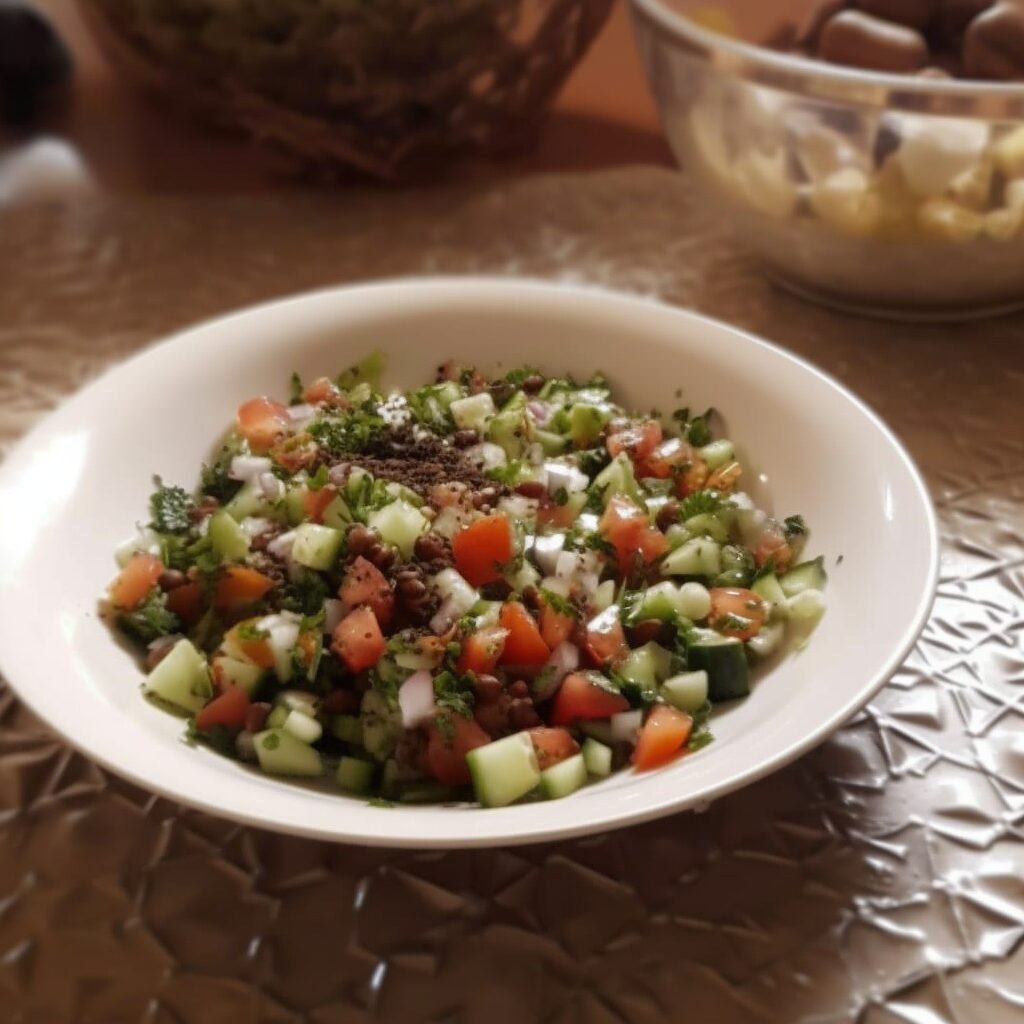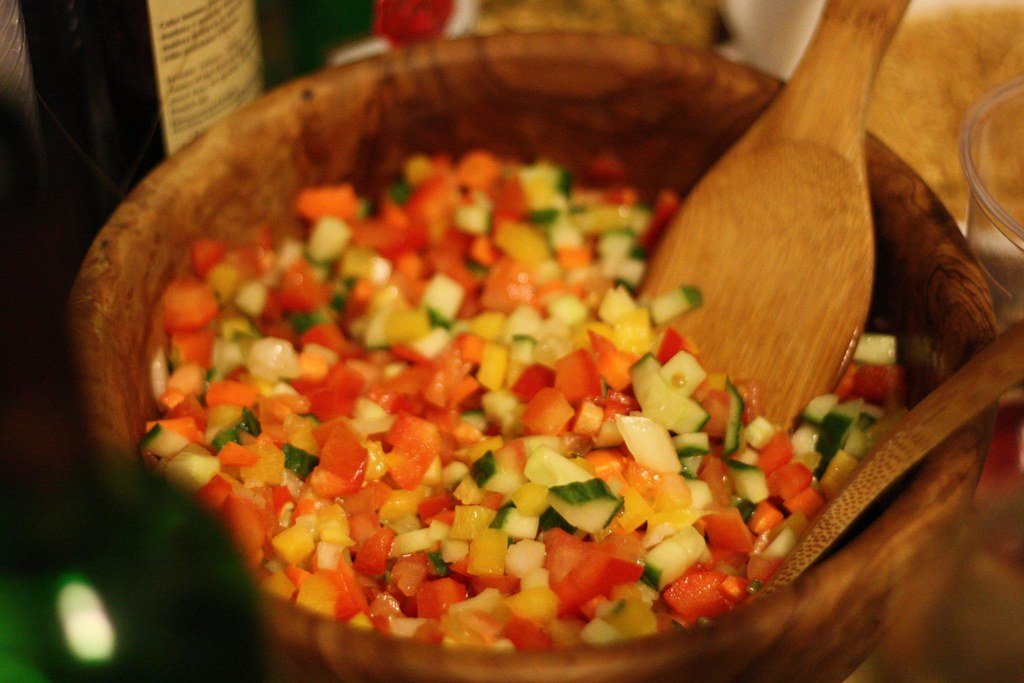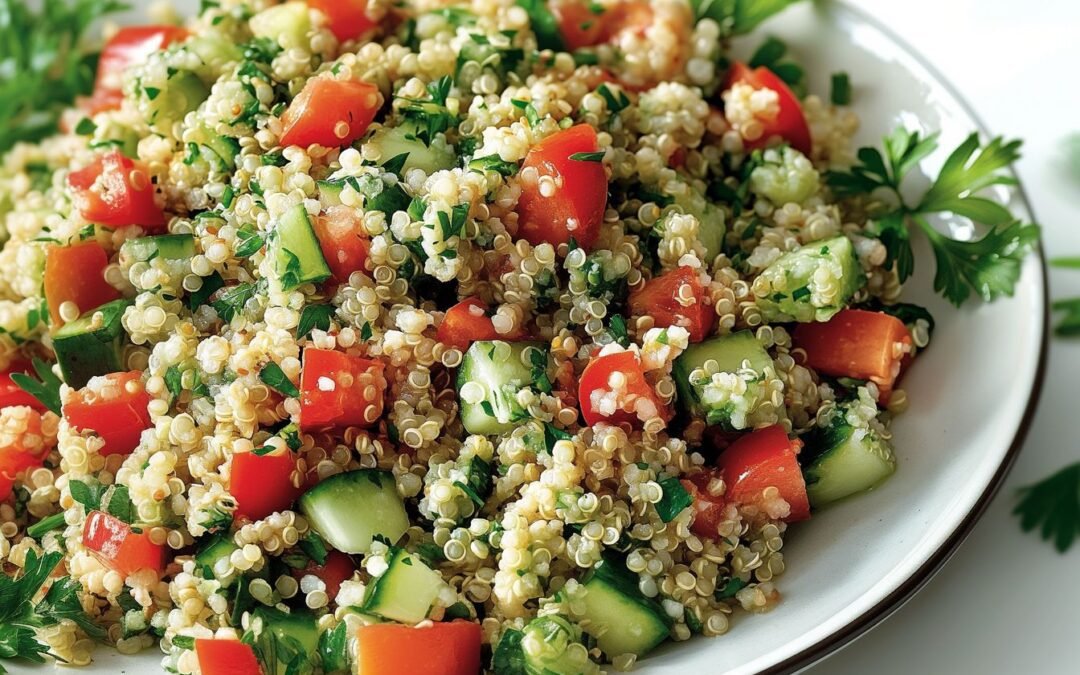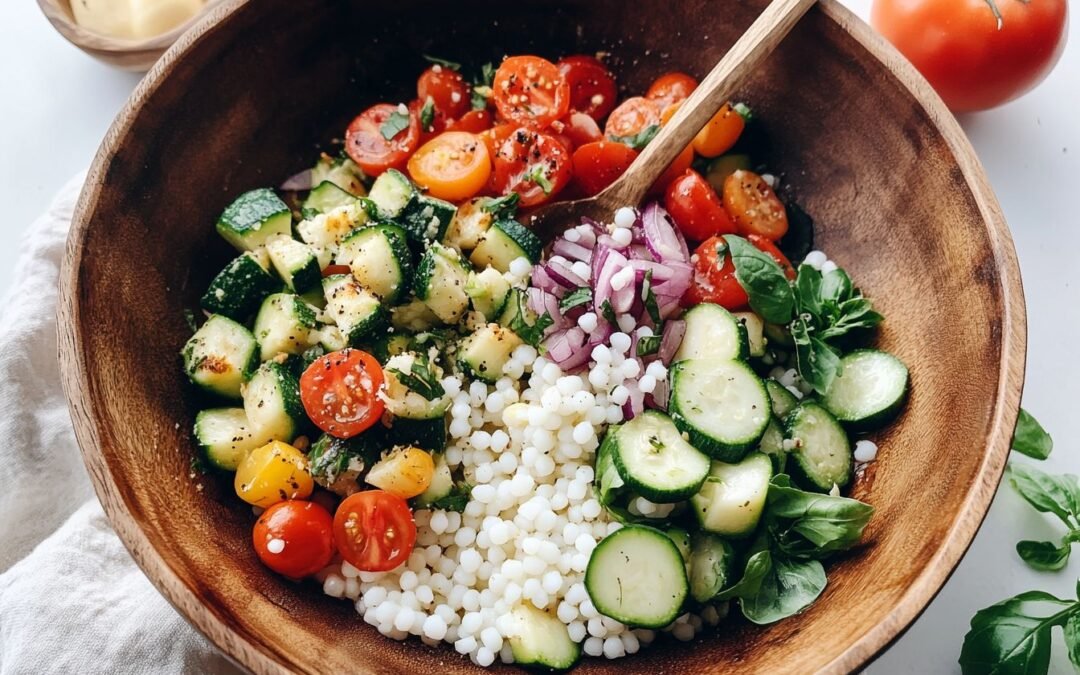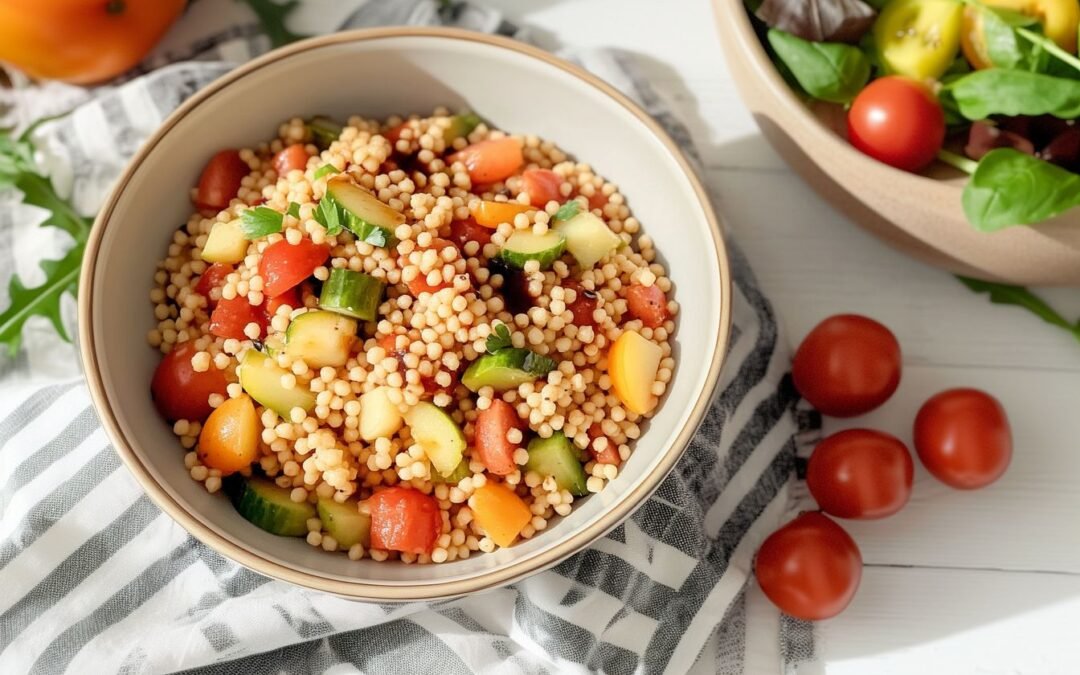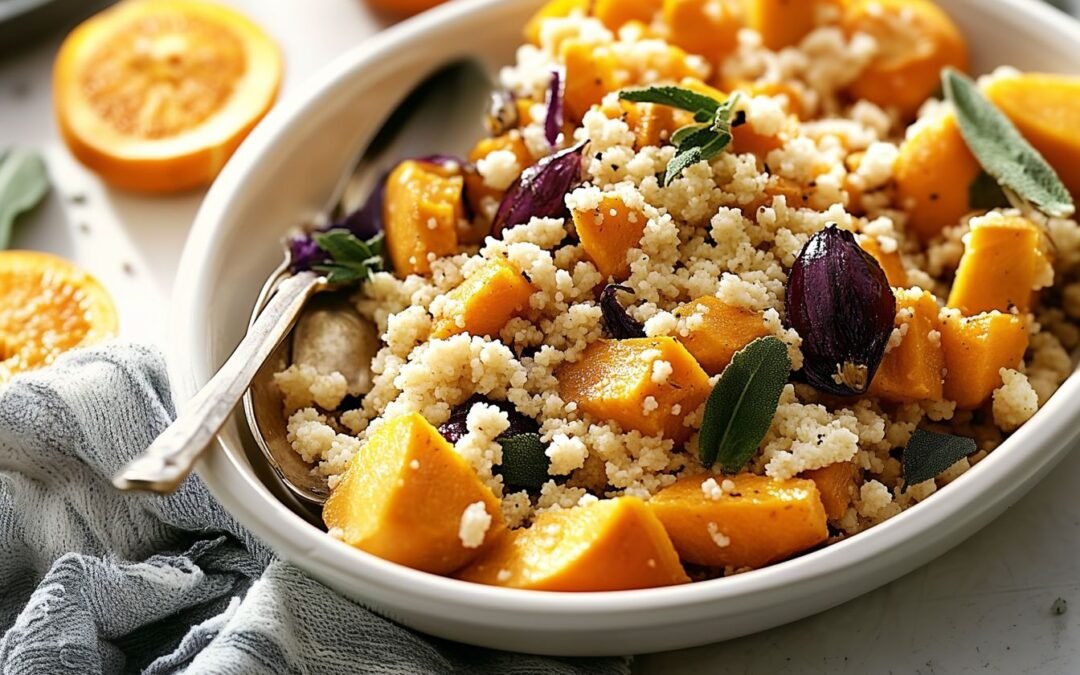Join me on a delicious journey in Iowa City. There, I discovered a hidden gem of a restaurant serving a traditional Arabic vegetable salad that transported me to the vibrant streets of Damascus. Explore the rich flavors, and the quest to recreate a secret family recipe. Additionally, discover the power of food to unite cultures and inspire new adventures. Embark on this unforgettable experience and bring a taste of the Middle East to your kitchen!
It all started as a typical night out with my friend. We were searching for a place to enjoy a tasty meal and catch up on life. Little did we know that we were about to embark on a journey filled with the rich flavors of the Middle East. Upon entering the odd-looking, unassuming restaurant, the warm ambiance and mouthwatering aroma that filled the air captivated us.
The menu offered a diverse selection of dishes. However, one side dish, in particular, caught our eye – a traditional Arabic vegetable salad. The description promised a refreshing blend of fresh vegetables, herbs, and tangy dressing that we couldn’t resist. We eagerly awaited our meal and noticed a customer entering the restaurant with a large group of boisterous children. Their high-pitched laughter and energetic chatter filled the once-peaceful dining room. As a result, it made it difficult for the other diners to enjoy their meals.
Despite the noise, we remained focused on the culinary delights that awaited us. When our Arabic vegetable salad arrived, we were not disappointed. The zesty dressing beautifully complemented the vegetables’ vibrant colors and crisp textures. It created a symphony of flavors that danced on our taste buds. We couldn’t help but feel connected to the rich culinary heritage behind this simple yet elegant dish.
As I savored each bite, I became increasingly curious about the recipe. Whoever made the salad, seemed to craft it with love and skill. It made me wonder about the hands that had prepared it. I soon learned that the restaurant’s owner made this dish. He was an elderly Syrian man who had brought his family’s recipes to Iowa City. Inspired by his culinary expertise and determined to recreate the salad at home, I asked him for the recipe before we left.
To my surprise and disappointment, the owner politely refused to share his treasured recipe. He explained that the recipe had been passed down through generations. Although I respected his decision, I couldn’t help but feel a twinge of sadness at the thought of never being able to enjoy this delightful salad outside of the restaurant.
This didn’t discourage me. So as a result, I embarked on a mission to recreate the recipe at home. Through trial and error, online research, and a few educated guesses, I eventually developed a version of the Arabic vegetable salad strikingly similar to the one we enjoyed in Iowa City. While it may not be the same recipe, it serves as a delicious reminder of that memorable night and the rich culinary traditions that span continents and generations.
To sum up, my experience in Iowa City taught me that even the most unexpected places could hold culinary treasures waiting for you to reveal. Despite the challenges of noisy children and the elusive recipe, my night at the Middle Eastern restaurant remains a cherished memory. Additionally, It serves as a testament to the power of food to bring people together, spark curiosity, and inspire me to explore new flavors and cultures.
Here is how I recreated the traditional Arabic vegetable salad at home.
Ingredients:
- 2 cups of chopped cucumber
- 1 cup of chopped tomatoes
- 1 cup of chopped lettuce
- ½ cup of chopped parsley
- 2 tablespoons of olive oil
- 2 teaspoons of sumac spices
- Salt and black Pepper for taste
How to create the traditional Arabic vegetable salad?
- Begin by washing the cucumber, tomatoes, lettuce, and parsley under cool running water, ensuring that you remove any dirt or debris. Next, pat them dry using a clean kitchen towel or paper towel.
- To chop the cucumber, trim the ends and slice it into thin rounds. From there, cut the rounds into small, bite-sized pieces. For the tomatoes, use a sharp knife to dice them into small, uniform pieces. Shred the lettuce into thin strips, discarding any tough stems or veins. Finally, finely chop the parsley, carefully removing any tough stems.
- Once your vegetables are prepped, transfer them to a large mixing bowl. Sprinkle the sumac spice over the vegetables, distributing it evenly. Then, drizzle the olive oil over the vegetables, using a spoon to coat each piece with the oil. Use your hands or a large spoon to gently toss the ingredients. Make sure that you coat everything with the sumac and olive oil.
- Now it’s time to season the salad with salt and black pepper. Start with a small amount and taste as you go, adjusting the seasoning to suit your preferences. Once you’re happy with the flavor, give the salad a final gentle toss to distribute the seasoning evenly.
- Now, you can serve your traditional Arabic vegetable salad. This vibrant and refreshing dish accompanies any main course meal, particularly meat and rice dishes. This salad’s combination of flavors and textures will surely please your taste buds and add a healthy dose of nutrition to your meal. Enjoy!
If you’d like to enhance the flavor and texture of your Traditional Arabic vegetable salad, consider adding crumbled feta cheese or crispy pita bread to the mix. The feta cheese will provide a tangy, creamy contrast to the fresh vegetables, while the pita bread will add a satisfying crunch.
Feel free to experiment with other vegetables like thinly sliced red onion, grated carrot, or finely chopped fresh mint leaves. These additions can provide even more depth of flavor and color to your salad, making it a truly personalized creation.
With these suggestions and substitutions, you can easily adapt the traditional Arabic vegetable salad to suit your taste preferences and the ingredients you have available. Enjoy experimenting with different combinations and flavors to create a salad that’s uniquely yours.
Thank you for joining me on my traditional Arabic vegetable salad recipe adventure. I hope this story inspires you to broaden your culinary horizons and remember the power of food to unite people. Bring the taste of the Middle East to your kitchen, and may your future adventures be filled with delicious discoveries, unforgettable experiences, and a deeper appreciation for the diverse world of flavors that await you. Bon appétit!
